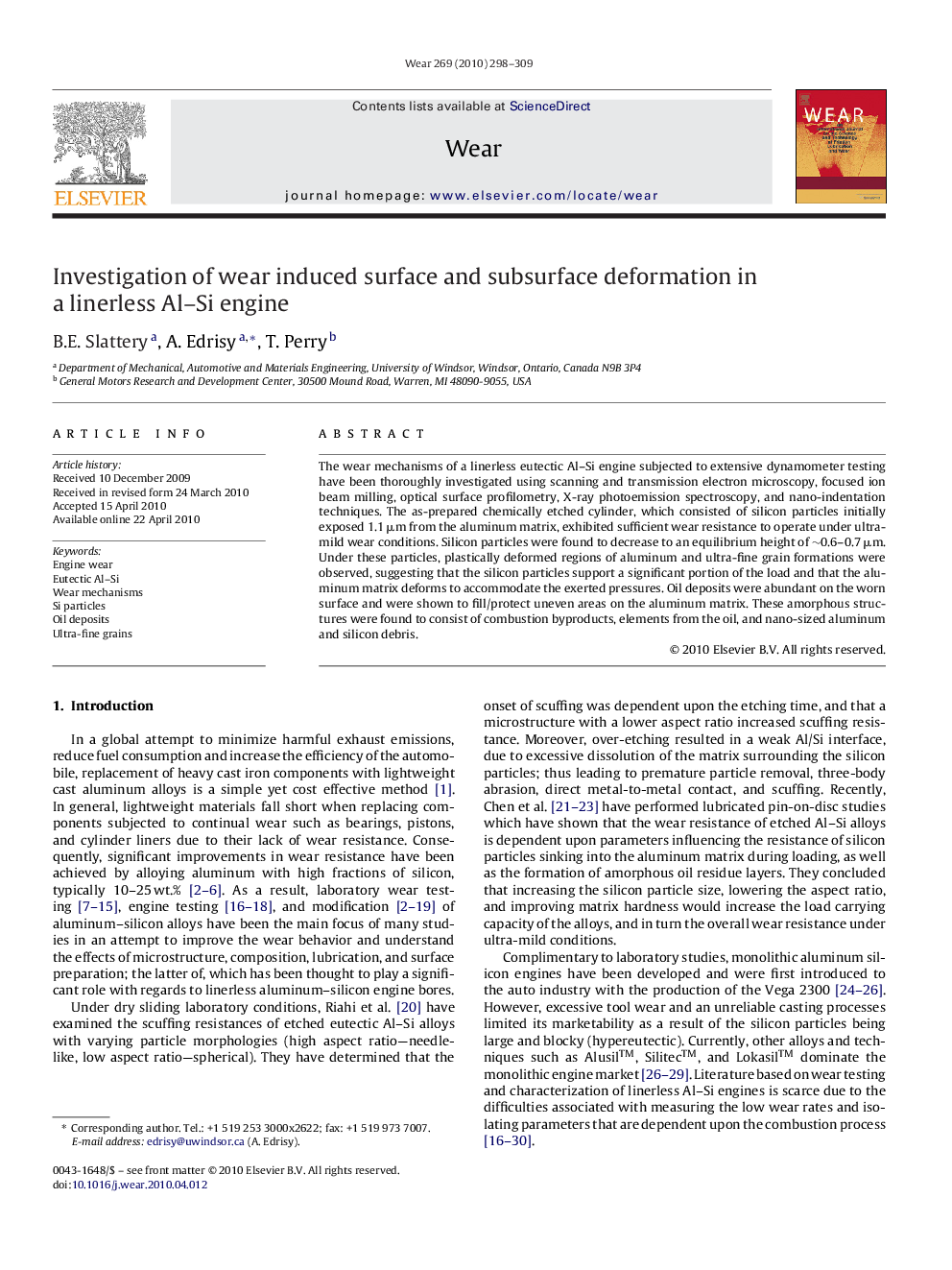| Article ID | Journal | Published Year | Pages | File Type |
|---|---|---|---|---|
| 619022 | Wear | 2010 | 12 Pages |
The wear mechanisms of a linerless eutectic Al–Si engine subjected to extensive dynamometer testing have been thoroughly investigated using scanning and transmission electron microscopy, focused ion beam milling, optical surface profilometry, X-ray photoemission spectroscopy, and nano-indentation techniques. The as-prepared chemically etched cylinder, which consisted of silicon particles initially exposed 1.1 μm from the aluminum matrix, exhibited sufficient wear resistance to operate under ultra-mild wear conditions. Silicon particles were found to decrease to an equilibrium height of ∼0.6–0.7 μm. Under these particles, plastically deformed regions of aluminum and ultra-fine grain formations were observed, suggesting that the silicon particles support a significant portion of the load and that the aluminum matrix deforms to accommodate the exerted pressures. Oil deposits were abundant on the worn surface and were shown to fill/protect uneven areas on the aluminum matrix. These amorphous structures were found to consist of combustion byproducts, elements from the oil, and nano-sized aluminum and silicon debris.
